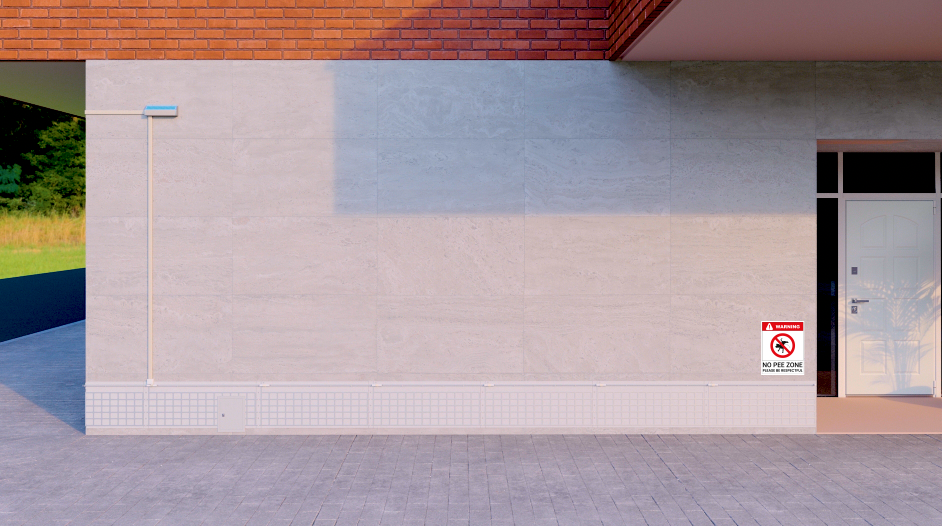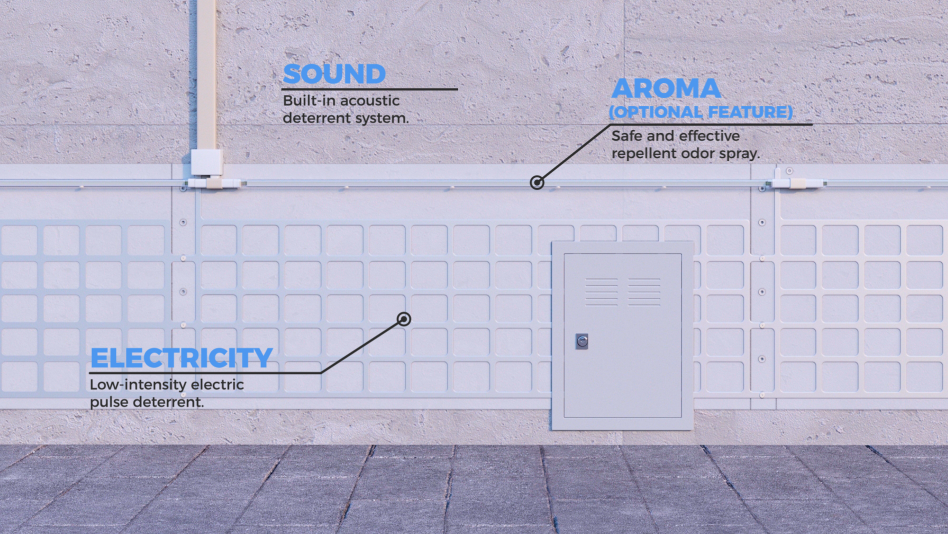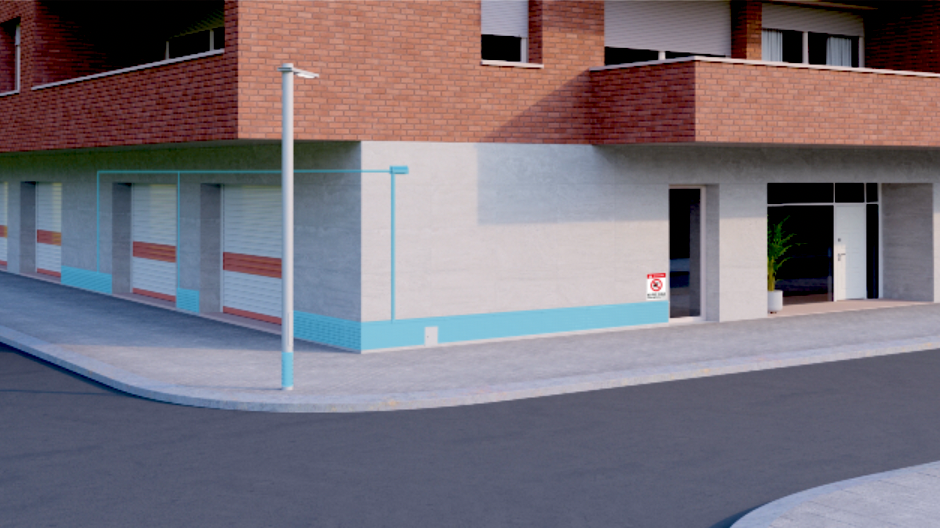PROTECT CITY ZONE
Animal Deterrence Technology for Urban Areas.
Protect City Zone is an advanced system designed to protect urban buildings and monuments from damage caused by animals such as birds, cats, dogs, and rodents. This innovative solution employs a multisensory deterrence technology that combines low-intensity electric shocks, high-frequency sounds, and repellent odors. Additionally, its solar-powered operation makes Protect City Zone a sustainable and ideal solution for effectively safeguarding urban infrastructure in an eco-friendly manner.
Key Technological Features

- Laminar Circuit: The system uses two conductive layers separated by an insulating layer. When an animal touches or wets the circuit, it triggers a low-intensity electric shock. This harmless but uncomfortable deterrence ensures animals avoid the area without causing damage.
- Modular System: Protect City Zone is adaptable to different needs and surfaces. Its modular design allows for customization and scalability, enabling installation in various settings, from small monuments to large buildings.
- Energy Autonomy: Thanks to integrated solar panels, the system operates completely autonomously, reducing reliance on external power sources and lowering maintenance costs. This guarantees continuous functionality, even in remote locations.
How Protect City Zone’s Multisensory Deterrence Systems Work

- Low-Intensity Electric Shocks: This feature creates an effective barrier to protect sensitive areas. Although harmless, the shocks are unpleasant enough to deter animals from approaching without causing harm.
- High-Frequency Sounds: The system emits sounds that are irritating to animals but inaudible to humans. This technology is ideal for keeping animals at bay without disrupting human activity.
- Repellent Odors: An optional system that releases environmentally friendly odors unpleasant to certain animals, effectively complementing other deterrence measures.
Conductive Paint Circuit
An alternative to the laminar circuit, the conductive paint circuit is designed for discreet applications or irregular surfaces. Instead of layered materials, this system uses conductive paint tracks applied directly over an insulating base on facades or surfaces. When an animal touches the tracks, the circuit closes, activating a low-intensity electric shock. This solution is particularly suitable for protecting public monuments or historic buildings where aesthetic concerns are crucial, as the system remains almost invisible. The conductive tracks connect to a control module that manages the required energy flow.
The Positive Impact and Benefits of the Patent for Animal Deterrence in Urban Environments

- Multisensory Effectiveness: Protect City Zone combines tactile, auditory, and olfactory stimuli, ensuring effective deterrence against multiple species, offering a comprehensive, long-term solution.
- Sustainable Protection: Solar-powered and energy-efficient, Protect City Zone is a sustainable solution that doesn’t rely on external resources, making it suitable for any urban environment.
- Heritage Preservation: The system protects historical monuments and buildings without causing structural damage. By preventing animal waste accumulation, it reduces the need for costly restorations and preserves the integrity of urban infrastructure.
- Safety and Ethics: Low-intensity electric shocks and other harmless technologies ensure that animals are not harmed in the process. This ethical solution respects urban wildlife while safeguarding urban areas.
- Lower Maintenance Costs: By keeping animals away and preventing damage, Protect City Zone significantly reduces the cost of maintaining urban infrastructure, including cleaning, repairs, and restoration, which can often be expensive when affected by animal activity.
Protect City Zone is a cutting-edge example of how a patent for animal deterrence in urban environments can improve infrastructure management in cities. With its modular design, multisensory deterrence technology, and autonomous operation, it offers an efficient, sustainable, and ethical solution for protecting buildings and monuments. Not only does it reduce maintenance costs, but it also helps preserve cultural heritage and ensures a balanced coexistence between wildlife and urban spaces, contributing to the development of smart, sustainable cities.







